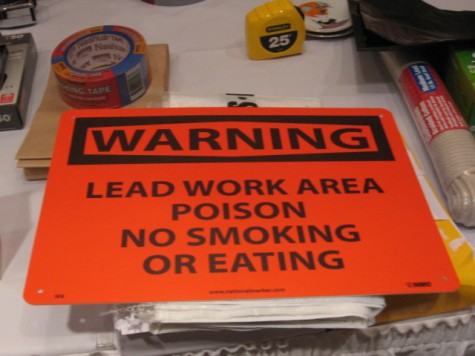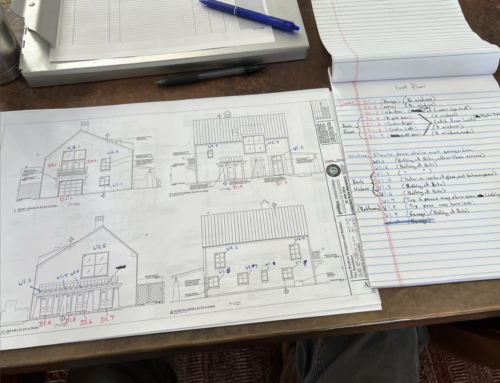All Eyes on New Lead Safety Laws

Most people are aware that exposure to lead is a bad thing. What you may not know is it’s a neurotoxin, and even a small amount present in your home can affect your family – especially small children – and contractors (like us!) who do renovations and repairs. Even family pets are at risk.
The risk of lead poisoning is especially high for those living and working in older homes and buildings. That’s why new regulations from the EPA that go into effect in April 2010 will require all contractors of any trade that disturb more than six square feet of painted surface in any building built before 1978 to be certified in lead-safety procedures. That means they must attend EPA’s Renovation, Repair and Painting (RRP) class – which our team just completed. In a nutshell, RRP standards have to do with containment of construction dust that may contain lead, and post-construction clean up by the contractor.
You can learn the specifics about the new laws and contractor requirements from the EPA pamphlet titled Renovate Right.
The Back Story on Lead
Studies show that lead is present in 86% of the houses built before 1940, when it was commonly used as the white base-coloring agent in oil paints. Other pigments were then added to tint the base color, some of them also toxic, such as chrome and mercury. You might be shocked that this is the case, but these older paint mixes lasted for generations; they are that durable. We see some that were applied decades ago and are still in perfect condition.
Lead gets into our bodies via ingestion (dirty hands to mouth) or via dust we breath. Typical sources of lead exposure are:
What This Means for Contractors
At Myers Constructs, Inc., we believe in complying with all local, state and federal regulations for running our business, and we have been using safe practices for lead since before we formed the company. That’s because we all have some education in hazardous materials like lead from art school, where we had to employ many safety practices such as containing flammables, toxins, and so on.
Our RRP classes told us much of what we have been doing to control dust on our job sites works well at controlling lead, too. We are really happy about this since good job-site lead-safety practices protect the homeowners, our employees, and future occupants in the home.
However, there is a short list of new tools we need to buy in order to be in compliance with RRP rules. They include:
What Homeowners Can Expect
If you own an older home, you should understand that it probably does have lead paint in it. In most cases, it’s under several layers of new, safer paint. And as the owner of an older home, you may have heard that the increase to average home-improvement projects impacted by these new laws will be minor. We hope that’s the case, but doubt it. Here’s why: The new laws require a certified lead specialist be on site for every project where six square foot of surface material is affected — that could mean plumbing, painting, roofing, carpentry, plaster, and so on. In addition, there are several other things your contractor, who may already have been cautious about lead dust, must now do:
As an informed homeowner, you should understand the new laws and how they apply to you and your home. You should ask prospective general contractors the following questions before hiring them:
1. Are you a licensed and insured contractor? What type of insurance do you carry, and what are the coverage limits? Every contractor – even sole proprietors – should carry general liability and workers compensation insurance. Ask to see certificates of insurance as proof of coverage.
2. Do you comply with state and federal lead laws? Are your staffers lead certified? What other certifications do you have? Ask for documentation.
3. Do you file demolition, dumpster and building permits with the city/township as required by law? The contractor should provide you with copies. Be sure to file them in your home’s records.
4. Is your company registered with the Commonwealth Attorney General’s Office as a home improvement contractor? Each contractor’s HIC registration number should appear on your contract, along with a listing of all subcontractors known at the time of contract, and anticipated start and end dates for the project.
5. Finally, do you have employees, or is everyone working for you “subcontractor? Real companies have full-time employees, for which they pay a regular payroll and payroll taxes.






